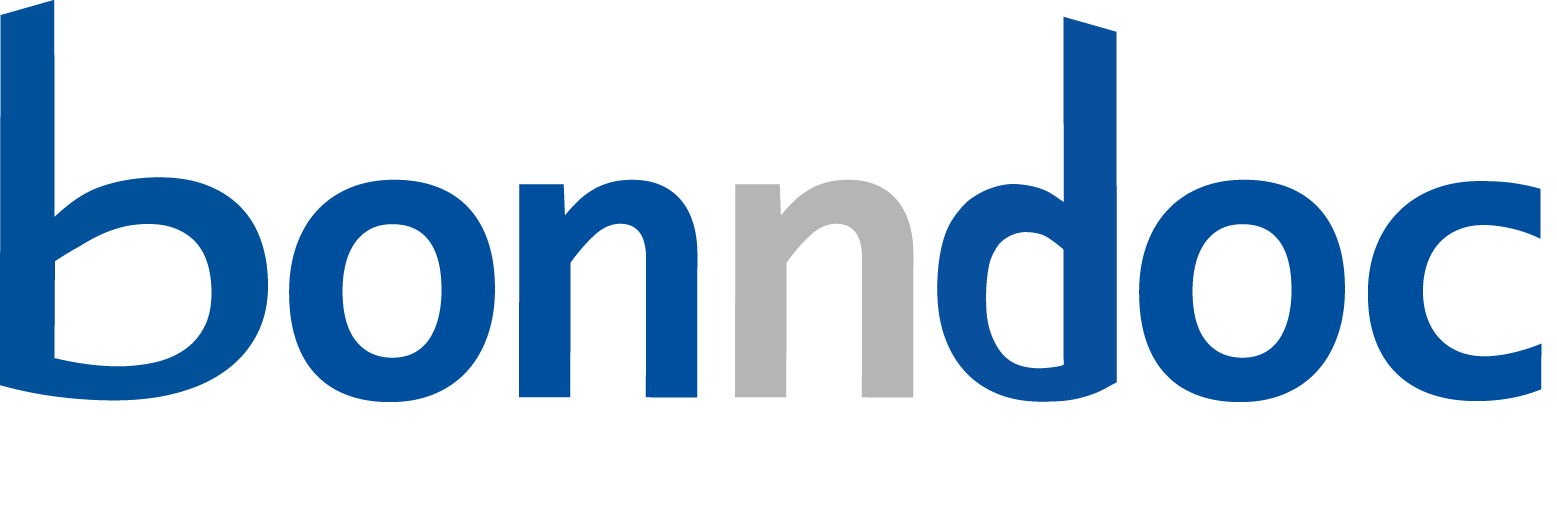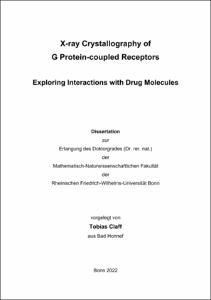Claff, Tobias: X-Ray Crystallography of G Protein-coupled Receptors : Exploring Interactions with Drug Molecules. - Bonn, 2023. - Dissertation, Rheinische Friedrich-Wilhelms-Universität Bonn.
Online-Ausgabe in bonndoc: https://nbn-resolving.org/urn:nbn:de:hbz:5-68798
Online-Ausgabe in bonndoc: https://nbn-resolving.org/urn:nbn:de:hbz:5-68798
@phdthesis{handle:20.500.11811/10590,
urn: https://nbn-resolving.org/urn:nbn:de:hbz:5-68798,
author = {{Tobias Claff}},
title = {X-Ray Crystallography of G Protein-coupled Receptors : Exploring Interactions with Drug Molecules},
school = {Rheinische Friedrich-Wilhelms-Universität Bonn},
year = 2023,
month = jan,
note = {G protein-coupled receptors (GPCRs) represent the largest family of integral membrane proteins and are widely appreciated as highly important drug targets. While routine drug discovery is largely based on high-throughput screening campaigns to identify potential lead compounds, structure-based drug design (SBDD) can substantially support the optimization route of the identified lead. However, high-resolution structural information of the desired target, for example by employing X-ray crystallography, is a prerequisite for SBDD. Crystal structure elucidation of proteins by X-ray crystallography is nowadays routinely applied for water-soluble proteins but still remains a challenge for membrane proteins and specifically for GPCRs.
Herein, we aimed to establish a structural biology platform for membrane proteins in the Pharmaceutical Institute at the University of Bonn. The successful implementation was demonstrated by the elucidation of new high-resolution crystal structures of the adenosine A2A receptor (A2AAR) in complex with relevant ligands. The A2AAR belongs to the adenosine receptor family of GPCRs that consists of four different members. A drug that blocks the A2AAR is already established for the treatment of Parkinson’s Disease, and others are intensively investigated as novel checkpoint inhibitors in the field of immuno-oncology with several ongoing clinical trials.
In total, seven new crystal structures of the A2AAR could be resolved, in complex with six A2AAR antagonists and one partial agonist (LUF5834). These comprise five previously unpublished A2AAR antagonists that were developed in-house, including a fluorescence-labeled ligand, a novel dual A2AAR antagonist/MAO-B inhibitor and a xanthine-based dual A2A/A2BAR antagonist. Additionally, one structure was obtained with a dual A2A/A2AAR antagonist that was developed by a pharmaceutical company and is currently under clinical investigation (Etrumadenant). Our structures revealed important determinants for A2AAR antagonist binding of new scaffolds including novel interactions, e.g., a direct hydrogen bond between A2AAR antagonists PSB-21417 and Etrumadenant with amino acid T88. Our ligands are currently being further optimized using the newly obtained structural information.
This achievement was facilitated by the discovery of an extraordinarily stable A2AAR crystallization construct that only harbored a single mutation in the transmembrane domains (S91K) and that was proven to be superior to previously established and highly-mutated A2AAR constructs.},
url = {https://hdl.handle.net/20.500.11811/10590}
}
urn: https://nbn-resolving.org/urn:nbn:de:hbz:5-68798,
author = {{Tobias Claff}},
title = {X-Ray Crystallography of G Protein-coupled Receptors : Exploring Interactions with Drug Molecules},
school = {Rheinische Friedrich-Wilhelms-Universität Bonn},
year = 2023,
month = jan,
note = {G protein-coupled receptors (GPCRs) represent the largest family of integral membrane proteins and are widely appreciated as highly important drug targets. While routine drug discovery is largely based on high-throughput screening campaigns to identify potential lead compounds, structure-based drug design (SBDD) can substantially support the optimization route of the identified lead. However, high-resolution structural information of the desired target, for example by employing X-ray crystallography, is a prerequisite for SBDD. Crystal structure elucidation of proteins by X-ray crystallography is nowadays routinely applied for water-soluble proteins but still remains a challenge for membrane proteins and specifically for GPCRs.
Herein, we aimed to establish a structural biology platform for membrane proteins in the Pharmaceutical Institute at the University of Bonn. The successful implementation was demonstrated by the elucidation of new high-resolution crystal structures of the adenosine A2A receptor (A2AAR) in complex with relevant ligands. The A2AAR belongs to the adenosine receptor family of GPCRs that consists of four different members. A drug that blocks the A2AAR is already established for the treatment of Parkinson’s Disease, and others are intensively investigated as novel checkpoint inhibitors in the field of immuno-oncology with several ongoing clinical trials.
In total, seven new crystal structures of the A2AAR could be resolved, in complex with six A2AAR antagonists and one partial agonist (LUF5834). These comprise five previously unpublished A2AAR antagonists that were developed in-house, including a fluorescence-labeled ligand, a novel dual A2AAR antagonist/MAO-B inhibitor and a xanthine-based dual A2A/A2BAR antagonist. Additionally, one structure was obtained with a dual A2A/A2AAR antagonist that was developed by a pharmaceutical company and is currently under clinical investigation (Etrumadenant). Our structures revealed important determinants for A2AAR antagonist binding of new scaffolds including novel interactions, e.g., a direct hydrogen bond between A2AAR antagonists PSB-21417 and Etrumadenant with amino acid T88. Our ligands are currently being further optimized using the newly obtained structural information.
This achievement was facilitated by the discovery of an extraordinarily stable A2AAR crystallization construct that only harbored a single mutation in the transmembrane domains (S91K) and that was proven to be superior to previously established and highly-mutated A2AAR constructs.},
url = {https://hdl.handle.net/20.500.11811/10590}
}






